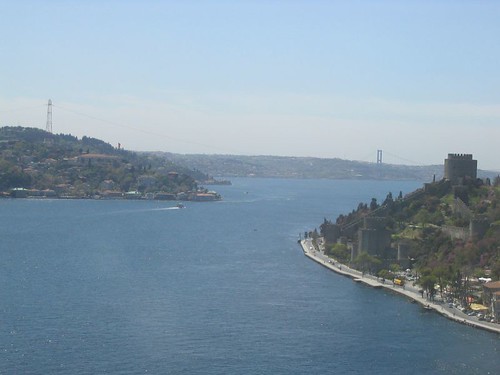There are many advisory columns detailing what to know about Europe, this is a given. We think you should pay attention to this one too. Although it’s the second-smallest continent in the world, Europe has a long and fascinating history. Made up of 50 countries and with a population of over 700 million, this continent has one of the richest and most interesting cultures around. While most people outside the continent may know some facts about Europe, there are numerous things you may not have found out until now.
We would like to present you with a countdown of the most interesting 7 facts about Europe. Let’s take a look and find out what you do know, and if you haven’t already, be sure to check out the best travel cities in Europe.
No. 7: A City of Two Continents – Istanbul

Photo Credit: mileusna
The border between Europe and Asia is the Bosphorus, a strait that passes right through the middle of Istanbul, one of the most fascinating and culturally rich cities. The Turkish capital, which has played a pivotal role in numerous historical events, is the only city in the world to lie on two continents.
No. 6: Volcanic Activity

Photo Credit: bellamira
Europe is home to several impressive and very much still active volcanos. The most popular examples include Mount Etna located in Sicily and Stromboli, located on the island bearing the same name, north of Sicily. The latter has been in continuous eruption for the past 2 millennia.
Want more on what to know about Europe? Continue reading:
No. 5: The Smallest Nation in the World – the Vatican

Photo Credit: malouette
With a surface area of only 0.2 square miles, the Vatican is the smallest nation on the globe. Home to a little over 700 religious figures and Catholic spiritual leaders, this tiny little state is located within the city of Rome, Italy.
No. 4: The Merry Cemetery – Romania

Photo Credit: premus
Death and burials are often seen as saddening and painful events. However, in a tiny little village in Romania, the locals decided to harvest a more positive outlook on the act of passing away when they set up the Merry Cemetery. The cemetery, which is now a UNESCO heritage site, has lively-colored wooden crosses for tombstones, crosses which are inscribed with humorous sayings and epitaphs.
No. 3: The Statue of Liberty

Photo Credit: Jim Linwood
Although nowadays the Statue of Liberty is considered one of United States’ greatest national symbols, the statue was actually built in France and was given away as a gift. The statue was dismantled into individual pieces and shipped to the New York Harbor by sea, where it was reassembled over the course of four months.
No. 2: The Mediterranean Desert

Photo Credit: Guilherme Jófili
A fact known to few is that the Mediterranean Sea used to completely dry up, a phenomenon called the Messinian Salinity Crisis. This represents a relatively new discovery, but it’s a clear example of how dramatic environmental changes can become.
No. 1: The Age of Migration

Photo Credit: Hamed Saber
How did Europe end up so diverse in terms of population and culture? More than 1500 years ago, Germanic and Slavic tribes flooded the continent and set their grounds all throughout Europe. Nowadays, that particular period in history is referred to as “the age of migration.” Europe’s population base was further enhanced by subsequent events in history, such as the invasions of the Hungarians, Avars, Bulgarians, Muslims, and Vikings.



